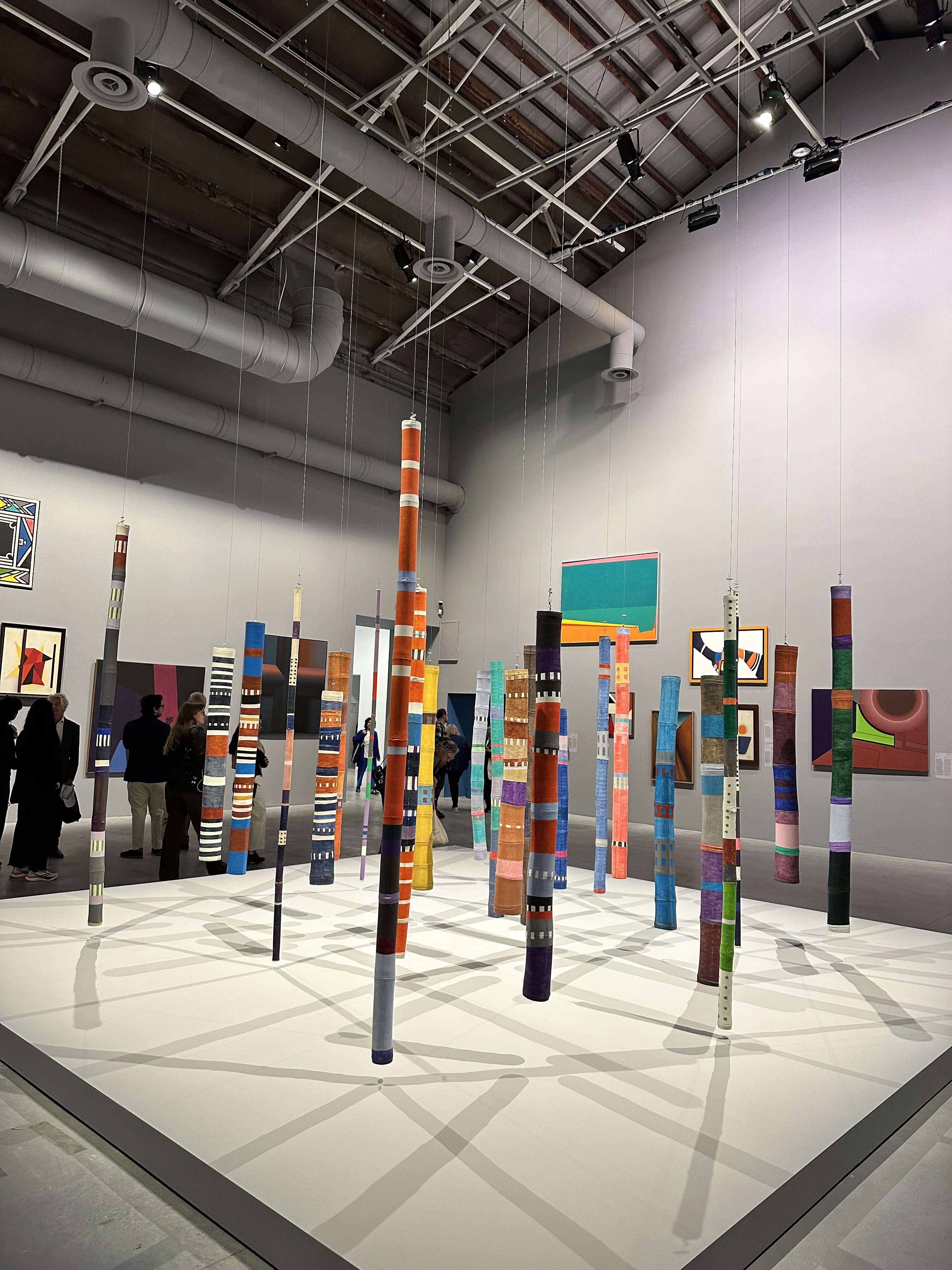Too Little Too Late: The 60th Venice Art Biennale’s Foreigners Everywhere

The 60th Venice Biennale, curated by Brazilian Adriano Pedrosa under the theme "Foreigners Everywhere," is split into two intriguing sections and showcases a thoughtful and politically aware curatorial approach.
Particularly notable is Pedrosa's 'Nucleo Storico,' which focuses on Modernisms from the Global South, located at the Giardini. This segment, presented in the style of an 18th-century salon hang, is overloaded with paintings that embody modernist traditions from the Global South.
This arrangement or ‘curatorial choreography’ challenges the long-held view that the modern aesthetic movement is purely a Western phenomenon. Clearly, Pedrosa is not just flexing his extensive research but is actively seeking to redefine the Western art history canon by breaking down geographic and stylistic hierarchies.
For instance, he strategically positions contemporary artists across the rooms of the Giardini like Maria Tanaguchi (Philippines) and Louis Fratino (USA) in conversation with dead artists such as Wilfredo Lam (Cuba), Nena Sagil (Philippines), and Bhupen Khakar (India), alongside renowned pairings like Diego Rivera and Frida Kahlo.
However, the lack contextualization requires viewers to forge their own links, presenting a considerable challenge for those not deeply versed in art, potentially oversimplifying the depth of this section. Furthermore, the arguments presented by each artwork tend to be quite similar, which may not resonate and engage all viewers.
Equally compelling is the second part of Pedrosa’s exhibition takes place at the Arsenale — a short stroll from the Giardini. This section, named 'Nucleo Contemporaneo', also captivates, particularly with its Disobedience Archive — an immersive space filled with a global array of social realist videos arranged in a circular layout reminiscent of a zoetrope.
The intentional use of sound bleeds was a curatorial trick. The overlapping soundscape creates a poetic chorus of voices protesting against global warming, empowering Indigenous peoples’ rights, and the world's interconnected poly-crises.
It took some time for me to grasp the curatorial intent behind this arrangement, but this approach, along with the purposeful inclusion of queer, outsider, and Indigenous artists, highlights a committed effort to showcase diverse stories using a mix of traditional and contemporary exhibition typologies.
Another highlight for me at the Arsenale was the Mataaho Collective's installation, where weaving throughout the space forms a structure akin to a womb, adding a striking visual element to the exhibition.
The Poetics and Politics of the Exhibition
Walter Benjamin's 1930s essay 'The Work of Art in the Age of Technological Reproducibility' feels remarkably pertinent here. Benjamin recognised the exhibitability of art as a powerful, progressive force within the technologically evolving landscape of the Modernist era in the Global North.
This year's Biennale, under Pedrosa's curation, powerfully highlights queer, outsider, and Indigenous artists. The prominent display of paintings and textiles in a salon-style format appears to be a deliberate homage to the ritualistic origins of art. This curatorial approach prompts us to consider whether Pedrosa is attempting to revive the sacred aspects of art-making, reflecting the global tradition of prehistoric Indigenous mark-making and the residual traces of ancient performance practices.
Considering Pedrosa's curatorial inflexion, one wonders how future Venice Biennales might continue to challenge and evolve the 'exhibition value' and 'cult value' of art to borrow Benjamin’s terms, particularly in light of ongoing discussions about decolonisation and New Museology, terms popularised since the 1980s by figures like René Rivard?
What is necessary goes beyond tried and tested curatorial strategy but a more radical approach that integrates art, science, anthropology, and other disciplines in and out of the academy to curatorially foster collective healing in a climate-changed world, and to continually combat fascism, promote peace and rethink our relationship with Earth. Despite some elements feeling formulaic, antiseptic or sterile, and not provocative enough, the curatorial ambition of this edition is evocative of the elegant and conceptual curatorial approaches seen in Okui Enwezor’s All the World’s Futures (2015) and Cecilia Alemani’s The Milk of Dreams (2022), marking it as impressively ambitious in its own right.
Finally, it is crucial to acknowledge the immense effort and dedication that goes into organizing large-scale exhibitions like this, particularly in the context of Giorgia Meloni’s right-wing, populist government in Italy. Against this political backdrop, the theme "Foreigners Everywhere" carries a special significance and a sense of hopeful dissent. The key takeaway from this edition of the Biennale is not to shock or to sensationalisz pain and grief, or to exoticize ‘the other’ but rather to encourage a thoughtful reflection and to notice what has always been there since time immemorial: migration and constant movement of people.
— LA, GMA Integrated News



